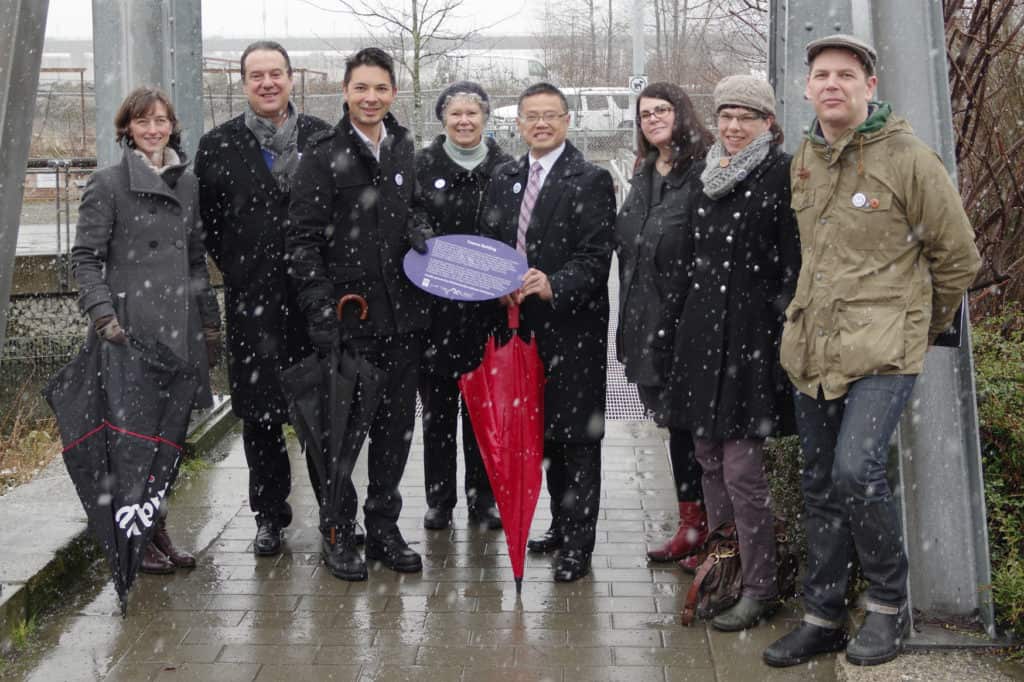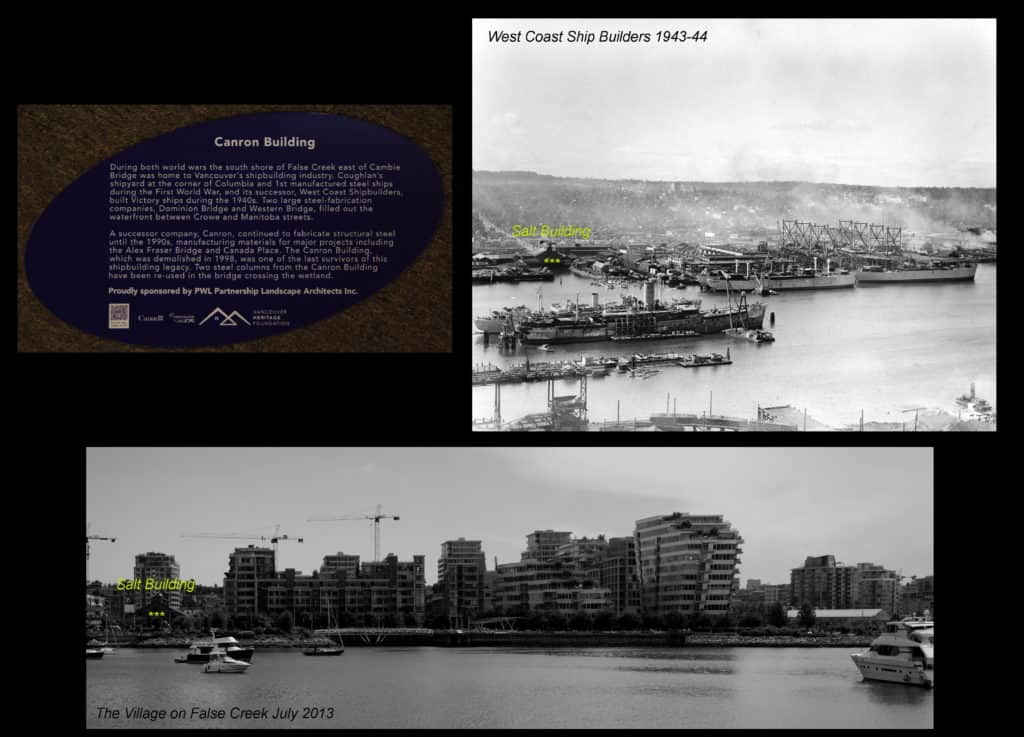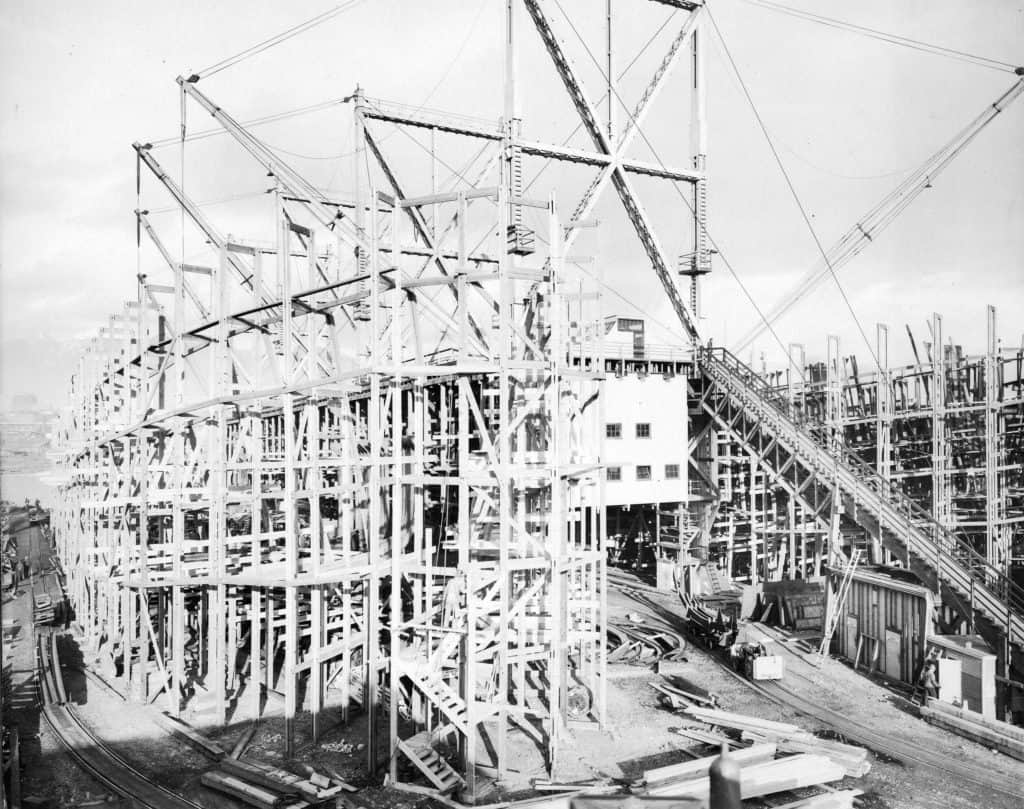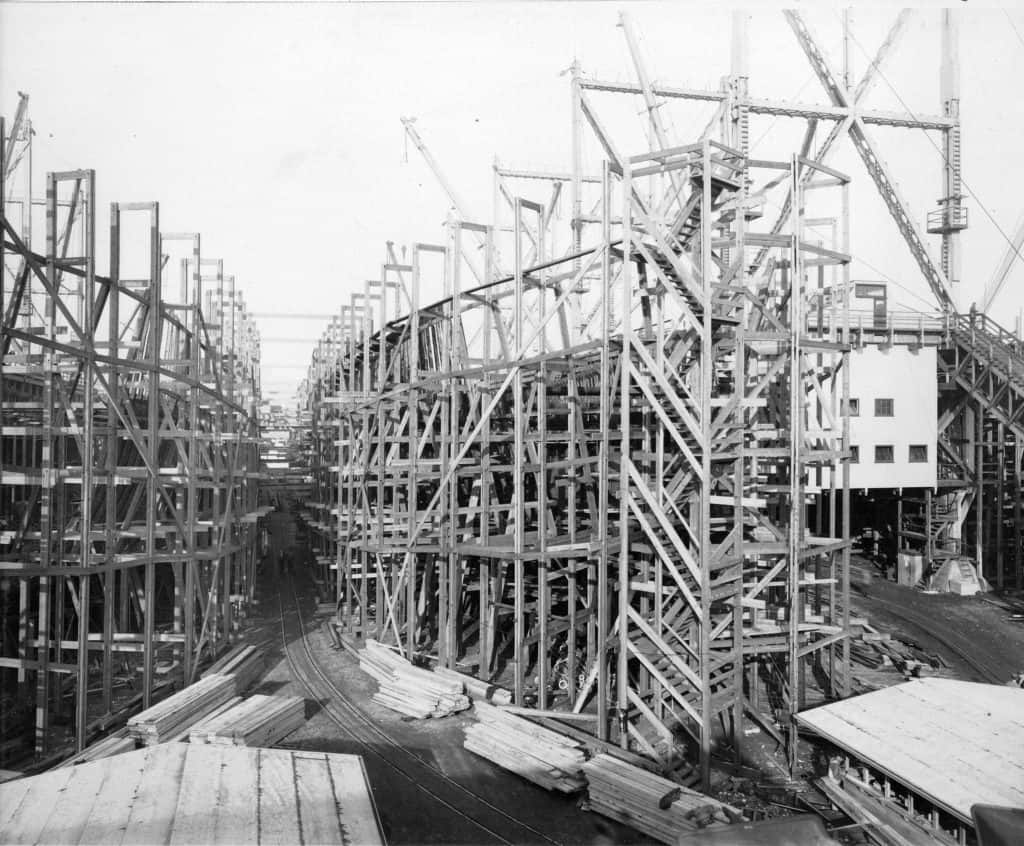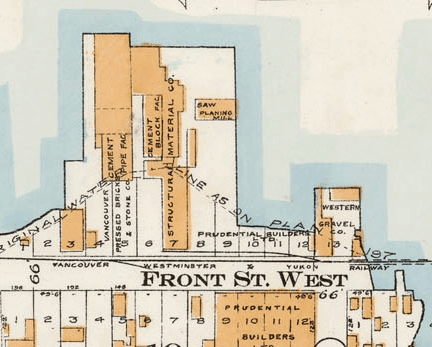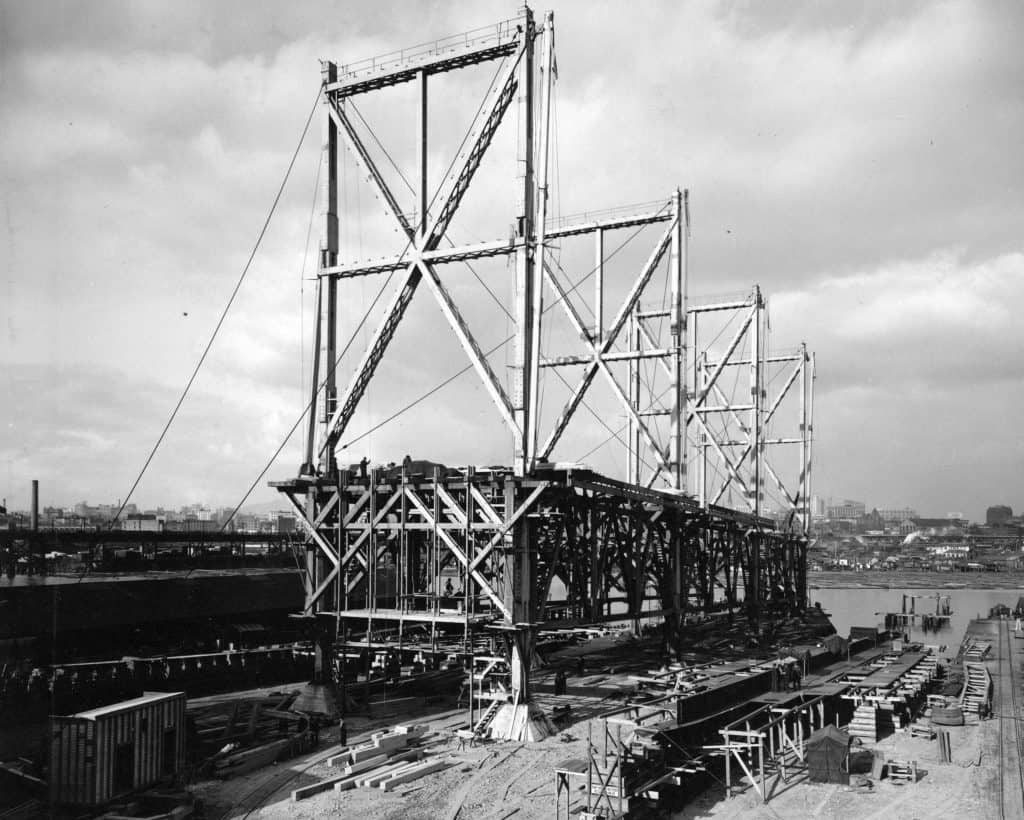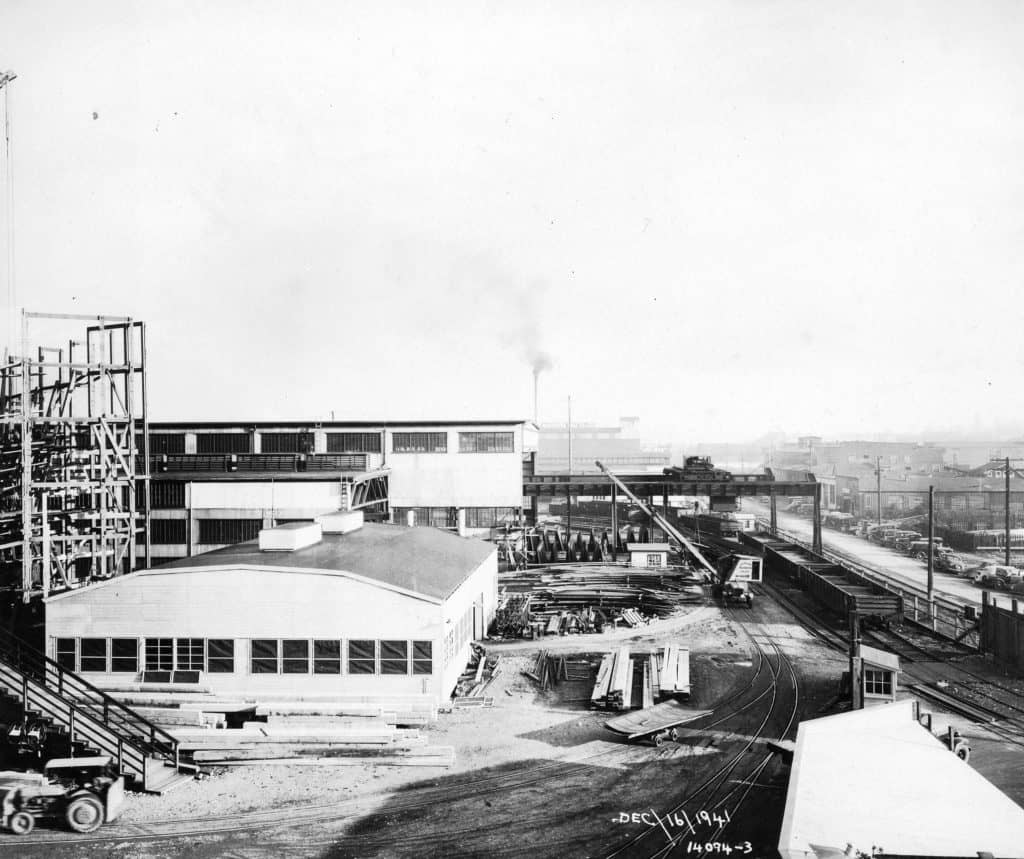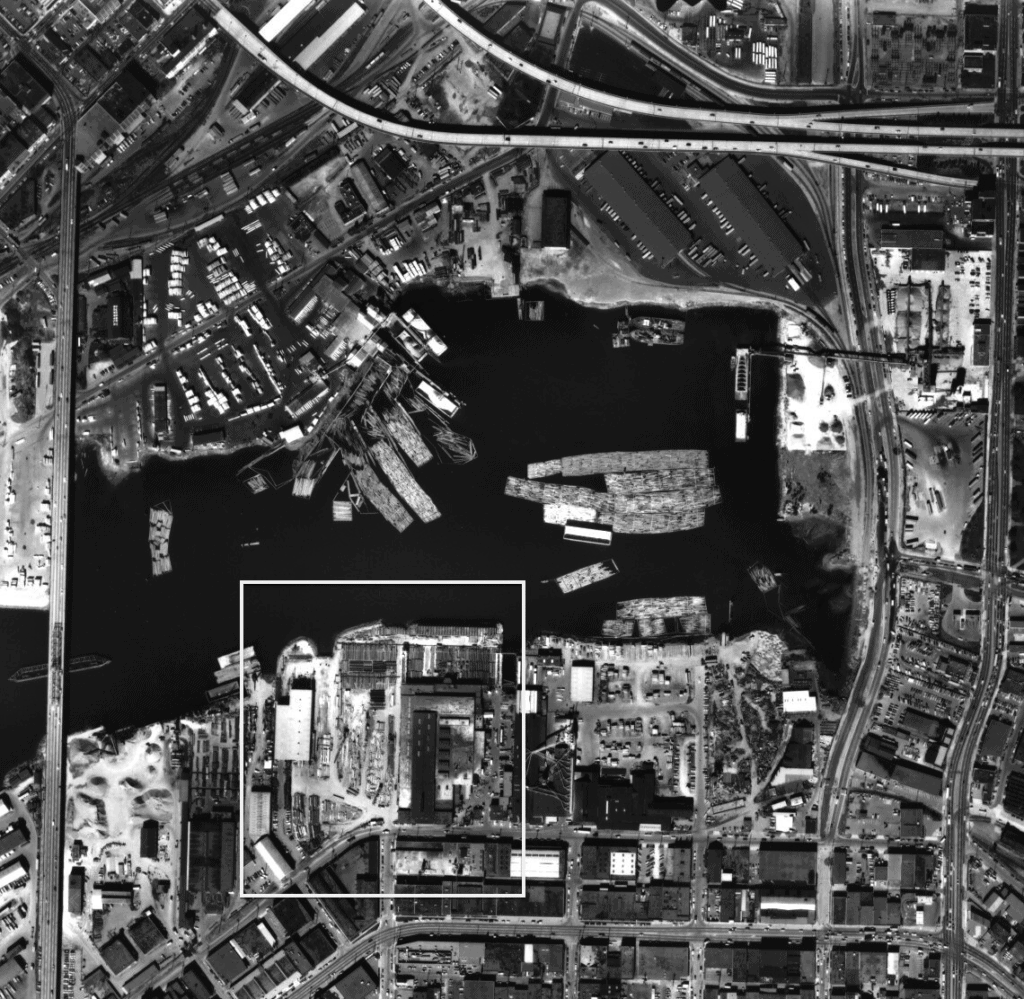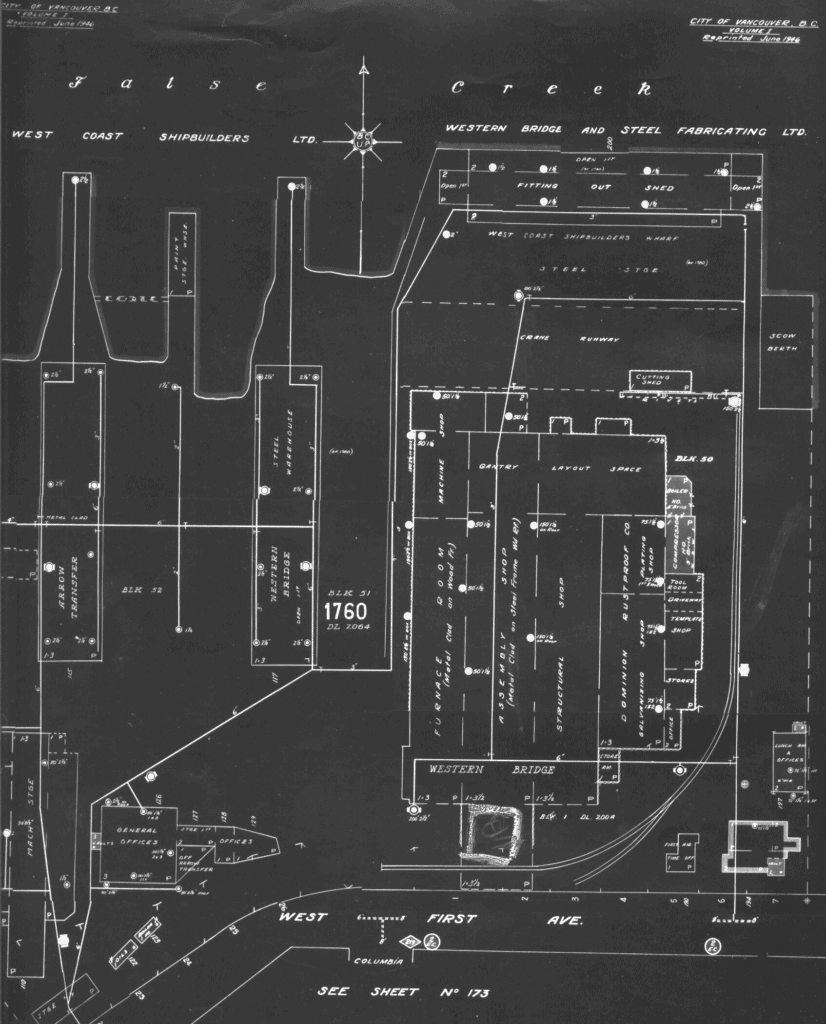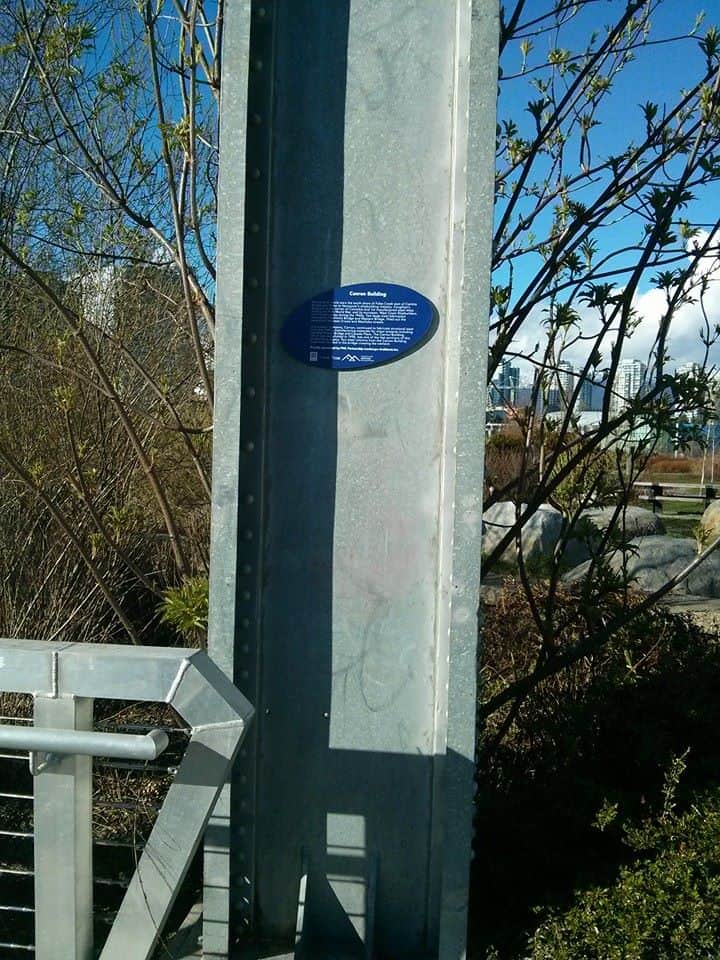"I began researching the industrial history of Southeast False Creek with a focus on the Canron site for a report in an upper level history class at UBC. Having lived in Vancouver my entire life, I have spent a lot of time engaging in recreational activities in and around False Creek. However, I was not aware of the area’s incredibly rich history until I began working on my report. I was surprised that an area I had spent so much time in had such a unique past that I did not know about. One particularly remarkable fact that I learned through my research was that J. Coughlan & Sons, a shipbuilding company in Southeast False Creek that was located on the site that the Canron building was later built on, received the largest single order for steel ships in Canada during the First World War—despite not having any past shipbuilding experience...
One photograph [from the Vancouver Archives] depicts thousands of workers engaging in heavy industrial activity near the site during the busiest period of time in False Creek’s history—the Second World War. It is important that the history of Southeast False Creek and the Canron site be shared so that the momentous activities that took place in the area are not forgotten by future generations.”
During both world wars the south shore of False Creek east of Cambie Bridge was home to Vancouver's shipbuilding industry. Coughlan's shipyard at the corner of Columbia and 1st manufactured steel ships during the First World War, and its successor, West Coast Shipbuilders, built "Victory" merchant ships during the 1940s. Two large steel-fabrication companies, Dominion Bridge and Western Bridge, filled out the waterfront between Crowe and Manitoba streets from the 1920s until the 1950s.
A successor company, Canron, continued to fabricate structural steel nearby, providing materials for the Alex Fraser Bridge and Canada Place, until the 1990s. Two steel columns from the Canron Building have been re-used in the bridge crossing the wetland.
Proudly sponsored by PWL Partnership Landscape Architects Inc.



